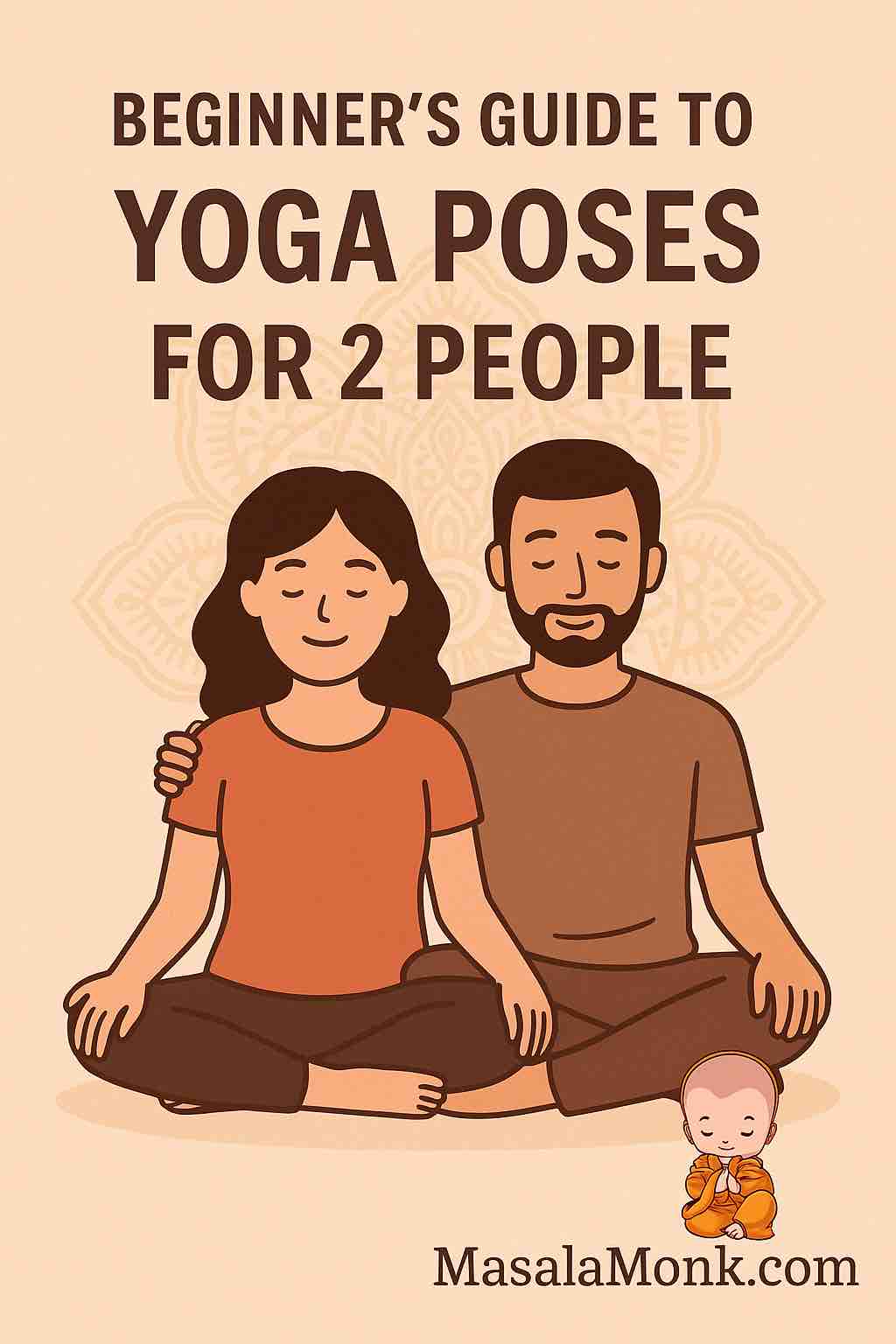
Connect, Stretch, and Grow Together
By Masala Monk
Introduction: The Joy of Practicing Yoga Together
Have you ever watched two people flow through yoga poses in perfect harmony and thought, “That looks so fun!”? Partner yoga is all about that magic. It transforms yoga from a solo practice into an opportunity to share movement, laughter, and trust. Whether you’re friends, a couple, or family, yoga for two builds deeper communication, strengthens bodies, and brings you both fully into the present moment—together.
What is Partner Yoga?
Partner yoga (also called couples or acro yoga at advanced levels) involves two people supporting each other to explore traditional yoga poses, gentle stretches, and mindful breathing. For beginners, it’s not about acrobatics—it’s about playful connection, mutual support, and trying new things in a safe way.
Why Try Partner Yoga?
- Deepens Trust & Communication: Every movement requires checking in, listening, and adjusting together.
- Enhances Flexibility & Balance: You’ll access deeper stretches and stronger balance with gentle partner assistance.
- Reduces Stress & Boosts Mood: Laughter and shared relaxation lower anxiety and release “feel-good” hormones.
- Strengthens Relationships: Physical touch and shared focus nurture intimacy, empathy, and a sense of partnership.
- Adds Fun & Variety to Your Practice: It’s playful, sometimes silly, and always rewarding!
Getting Started: Foundations for Success
1. Choose Your Space Wisely
- Use a spacious, quiet area with non-slip yoga mats or carpet.
- Clear away furniture or obstacles.
- Dim lighting and soft music can set the mood.
2. Dress Comfortably
- Wear stretchy, breathable clothes you can move in.
- Bare feet or non-slip socks recommended.
3. Communicate and Consent
- Always check in before, during, and after each pose.
- Give clear feedback: “That feels great!” or “Let’s slow down here.”
- Respect each other’s limits. Never push deeper than what feels safe.
4. Warm Up Together
- Start with 5–10 minutes of gentle movement: Cat-Cow, neck rolls, gentle twists, Downward Dog, and Child’s Pose.
- Add synchronized breathing—inhale and exhale together for a few rounds.
Essential Tips for Partner Yoga
- Move Slowly: Focus on transitions, not just the end pose.
- Use Eye Contact: It helps stay connected and feel present.
- Modify with Props: Yoga blocks, pillows, or folded blankets make poses accessible for everyone.
- Breath is Key: Breathe together to build rhythm, calm, and focus.
Detailed Beginner Partner Yoga Poses
1. Seated Forward Fold
How to Practice:
- Sit facing your partner, legs stretched out, soles of the feet touching or a few inches apart.
- Hold each other’s hands or wrists.
- Inhale together, lengthen the spine; as you exhale, gently pull each other forward, folding from the hips (not rounding the back).
- Hold for 3–5 breaths, then swap who leads the forward fold.
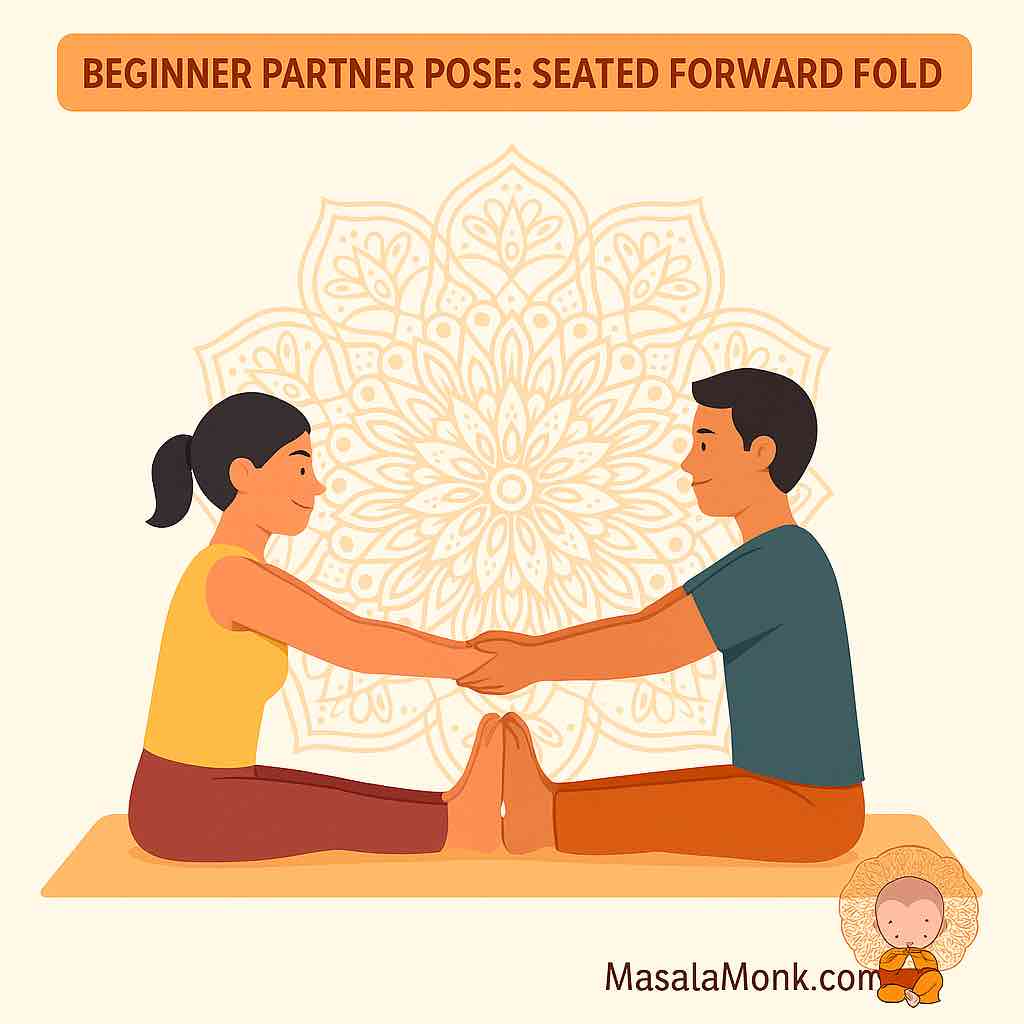
Benefits:
- Deep hamstring and lower back stretch
- Builds gentle trust and body awareness
Tips:
- Bend your knees if you feel strain in the back of your legs.
- Communicate how far to fold—no forcing!
- Keep the shoulders relaxed.
2. Double Tree Pose
How to Practice:
- Stand side by side or face to face with your partner.
- Each person shifts weight onto one foot and places the sole of the other foot against the standing leg (calf or thigh, not the knee).
- Bring palms together at heart center, or join hands overhead, helping each other balance.
- Gaze softly forward or at each other.
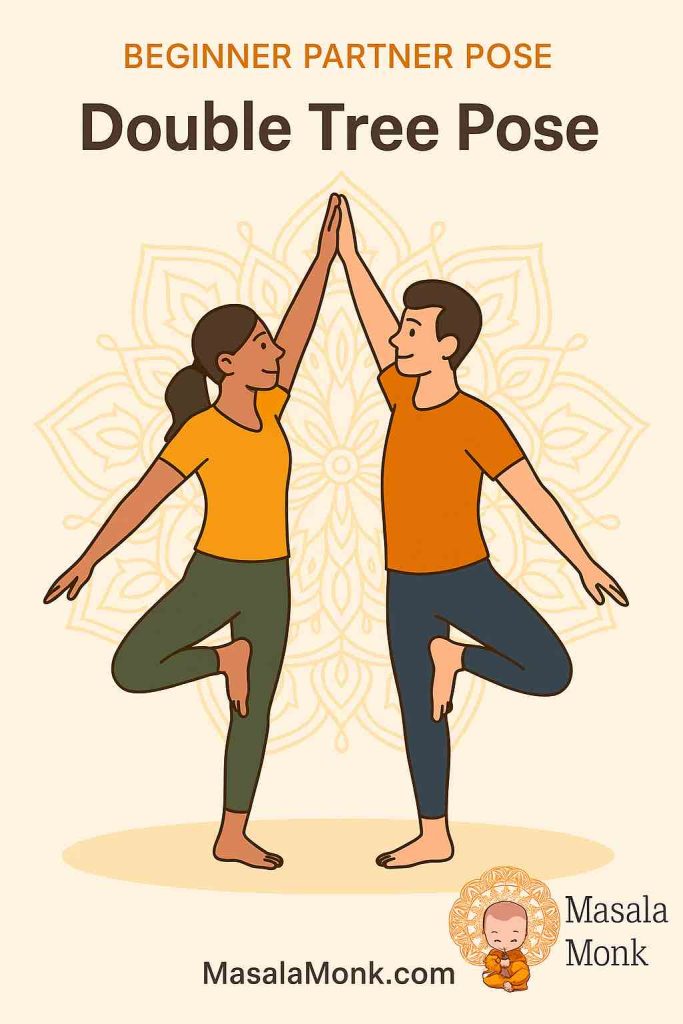
Benefits:
- Improves balance and coordination
- Opens hips and builds stability
Tips:
- Use a wall nearby if you need extra support.
- If balancing is tough, try touching just the big toes for stability.
3. Partner Boat Pose
How to Practice:
- Sit facing your partner, knees bent, toes touching.
- Hold hands outside your legs.
- Press feet together and begin to lift legs, extending them into a “V” shape as much as flexibility allows.
- Keep chests lifted and spines long, balancing on sitting bones.
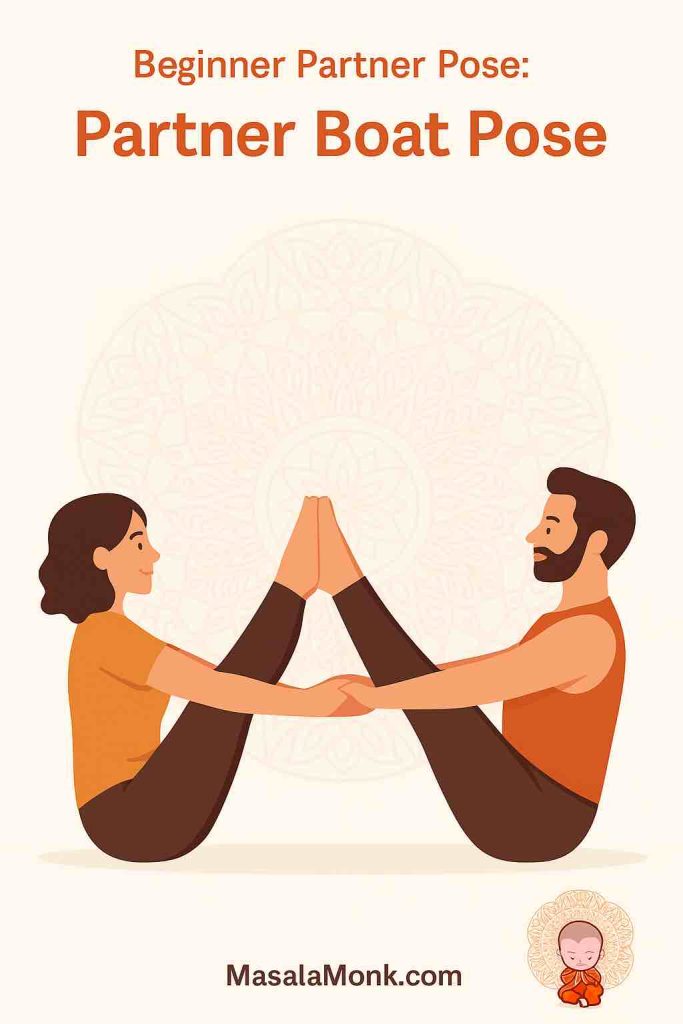
Benefits:
- Strengthens core and hip flexors
- Encourages laughter and teamwork
Tips:
- It’s OK to keep knees bent—work with your range of motion.
- Hold for 3–5 breaths, then gently release.
4. Seated Spinal Twist (Back-to-Back)
How to Practice:
- Sit cross-legged, back-to-back, with spines tall.
- Inhale, raise arms overhead.
- Exhale, both partners twist to the right, placing the left hand on the right knee and the right hand on the partner’s left knee or thigh.
- Hold for a few breaths, then repeat on the left.
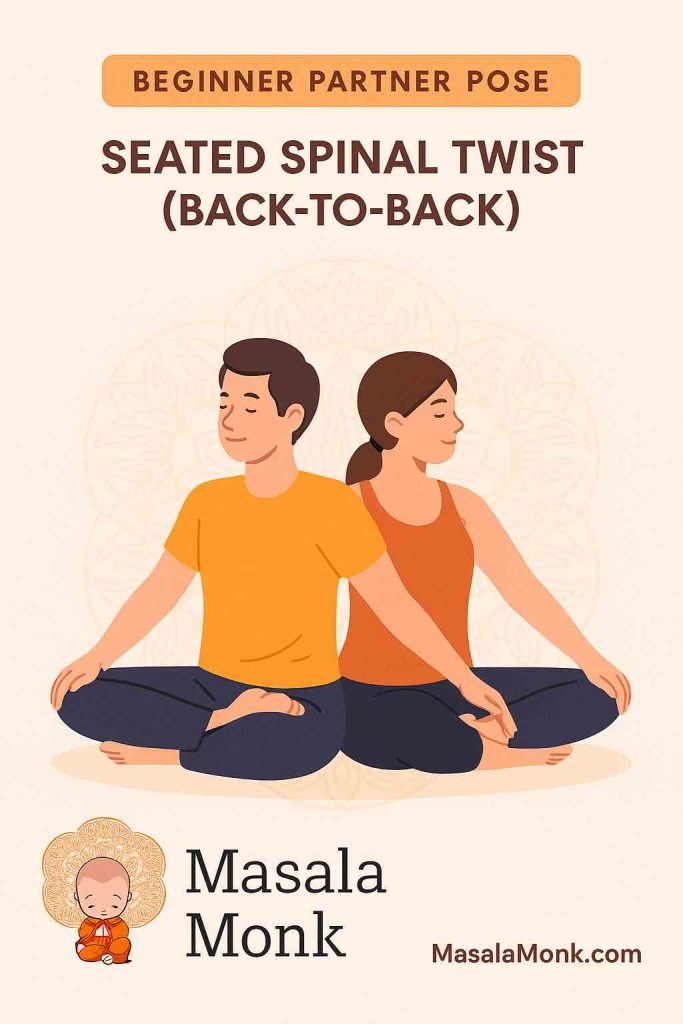
Benefits:
- Improves spinal mobility
- Encourages mindful connection and mirroring
Tips:
- Move slowly and avoid forcing the twist.
- Feel your partner’s support along your back.
5. Temple Pose
How to Practice:
- Stand facing your partner, feet about hip-width apart.
- Both inhale, raise arms, and touch palms together overhead.
- Step back until your bodies form a “roof” shape, with arms straight and chests opening.
- Hold for 3–5 breaths, pressing palms together for a gentle stretch.
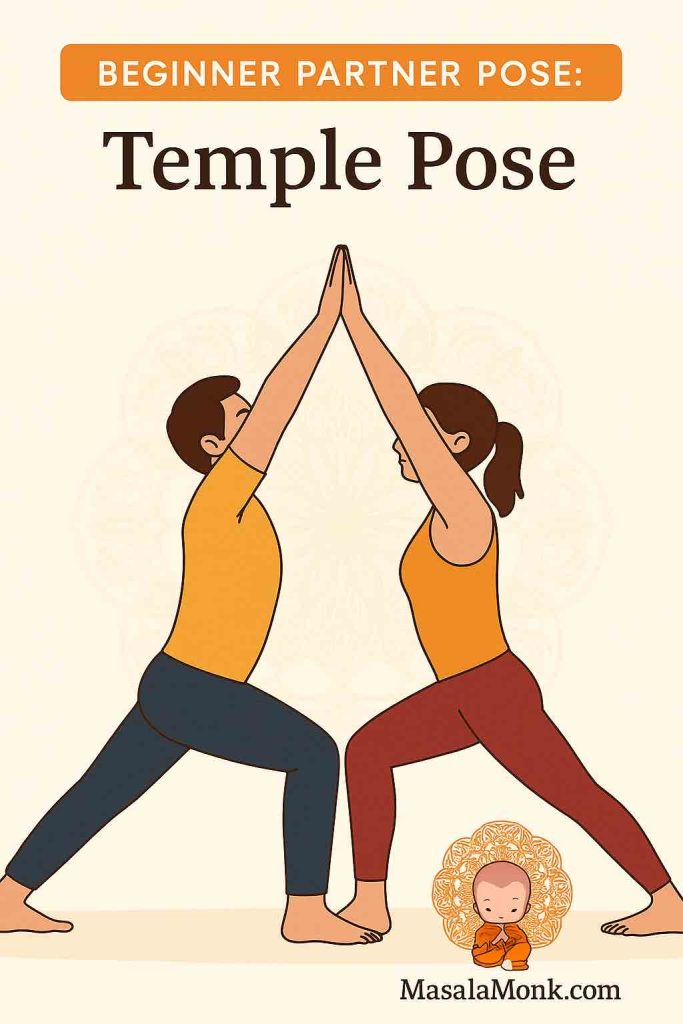
Benefits:
- Stretches chest, shoulders, and arms
- Builds focus and synchronization
Tips:
- Adjust how far you step back to suit your flexibility.
- Keep elbows soft and neck relaxed.
6. Child’s Pose + Fish Variation
How to Practice:
- Partner A kneels in Child’s Pose (knees wide, arms forward).
- Partner B sits close behind, then gently lies back along Partner A’s back, opening the chest and arms in a relaxed “Fish Pose” variation.
- Breathe deeply, feeling the gentle expansion and support.
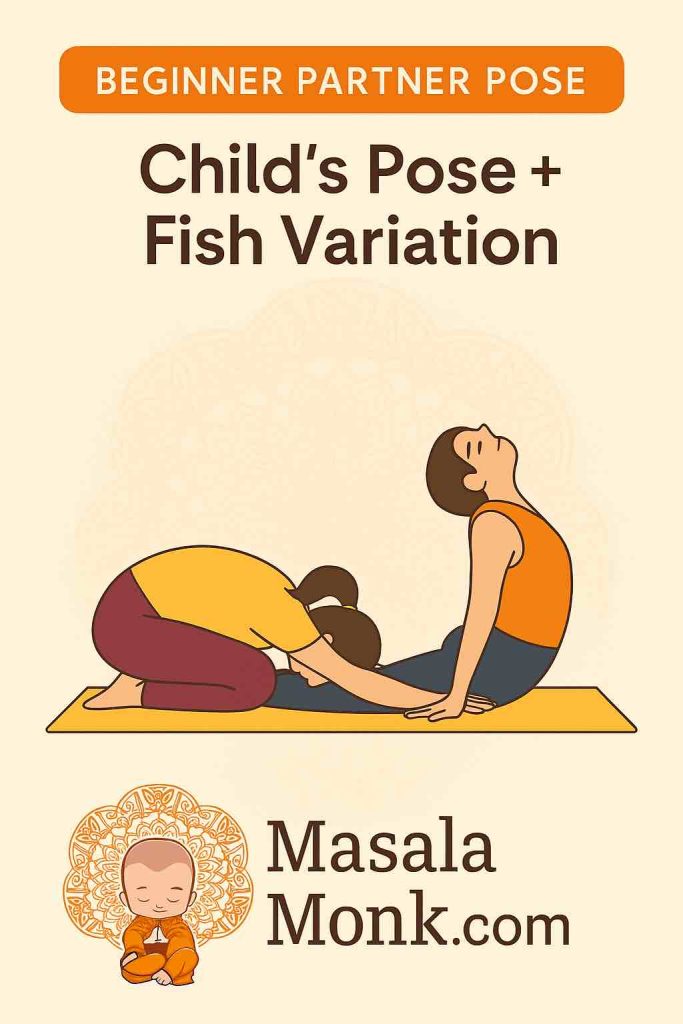
Benefits:
- Relieves tension in the back and hips
- Promotes trust and restorative relaxation
Tips:
- Switch roles for balanced benefit.
- Place blankets under knees or forehead for comfort.
7. Partner Camel
How to Practice:
- Both partners kneel, facing each other.
- One person moves into Camel Pose (arching back, hands on heels).
- The other supports their lower back, keeping gentle eye contact and offering support.
- Hold, then switch roles if desired.
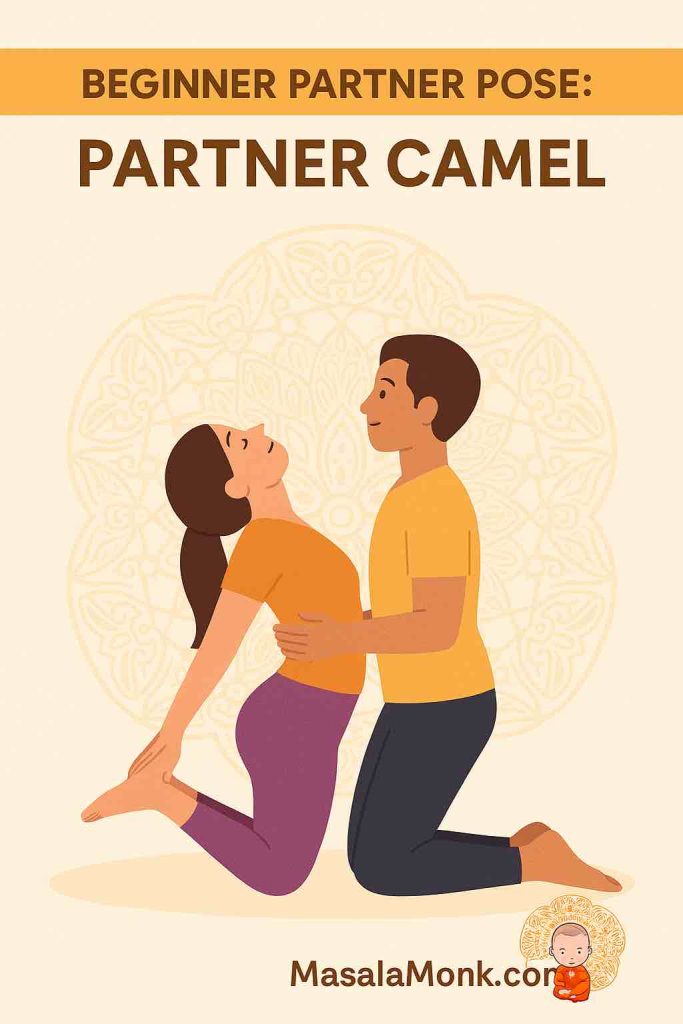
Benefits:
- Opens chest and front body
- Builds communication and trust
Tips:
- Only arch as far as is comfortable—avoid overextending the neck or lower back.
- Use a folded blanket under knees for comfort.
8. Partner Chair Pose
How to Practice:
- Stand back-to-back, feet hip-width apart.
- Link arms or press backs together.
- Slowly bend knees and lower into a “chair” position, supporting each other equally.
- Hold for a few breaths, then slowly stand up together.
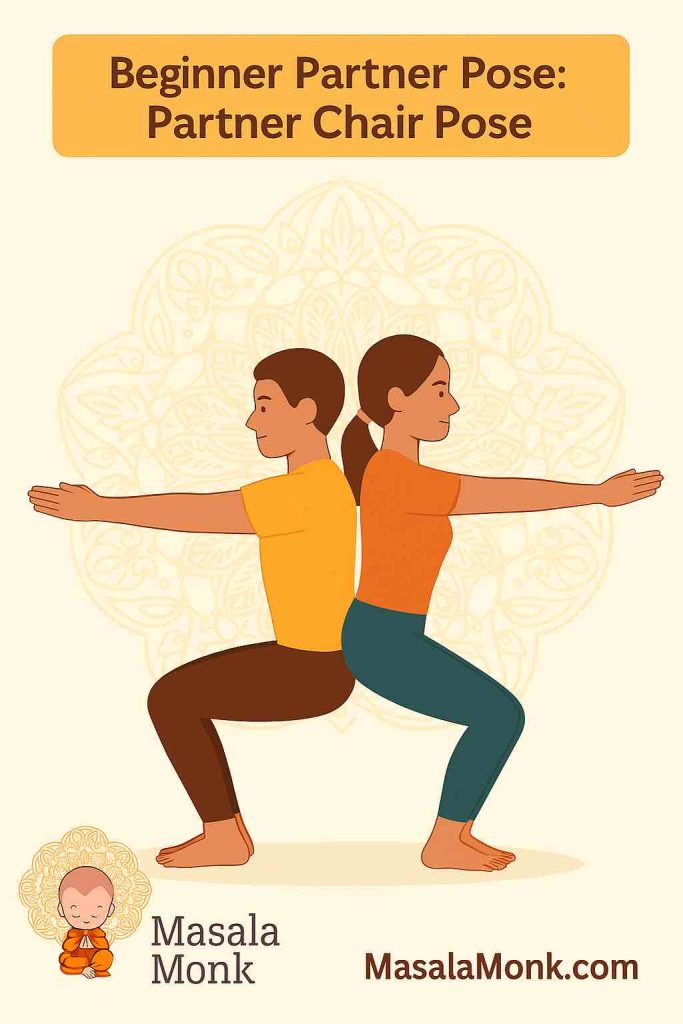
Benefits:
- Strengthens thighs, glutes, and core
- Fosters communication and equal effort
Tips:
- Move slowly and talk each step through.
- If you lose balance, stand up and try again—laugh it off!
Finale: Partner Savasana (Relaxation for Two)
How to Practice:
- Lie down back-to-back or side by side, with arms and legs relaxed and eyes closed.
- Let your breath slow, feeling the gentle presence and warmth of your partner.
- Stay here for 3–5 minutes, absorbing all the calm, trust, and connection you’ve built together.
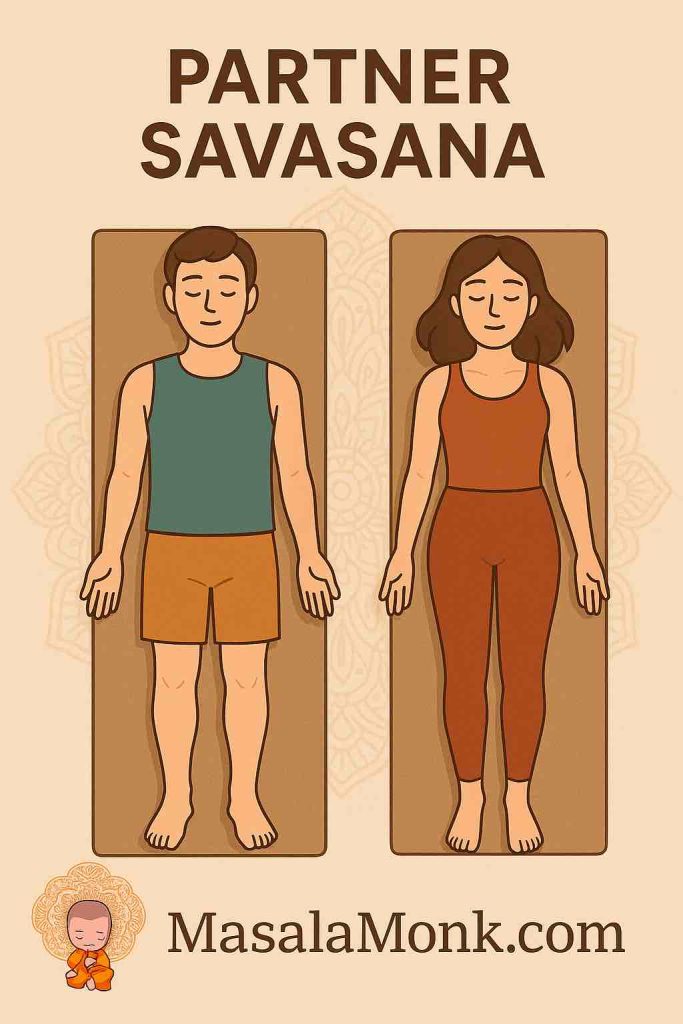
Optional:
Hold hands, touch feet, or simply lie quietly in each other’s company.
Why Finish This Way?
Savasana is yoga’s ultimate relaxation pose. Sharing this restful moment helps you both reflect, let go, and return to the world grounded and reconnected.
Frequently Asked Questions
Q: Can beginners really do these partner poses?
Absolutely! All the poses above are beginner-friendly and designed to be safe with clear communication. Modify any pose as needed.
Q: What if we have different flexibility levels?
No problem! Use props, bend knees, and honor each person’s comfort zone. The point is connection, not perfection.
Q: Is partner yoga only for couples?
Not at all! Friends, siblings, or even parents and kids can enjoy partner yoga together.
Q: What if something feels uncomfortable?
Stop, adjust, and communicate. Never force a stretch or pose.
Final Tips for a Great Partner Yoga Session
- Practice regularly—even once a week builds trust and flexibility.
- End each session with a moment of gratitude for your partner.
- Celebrate small wins—balancing together, trying a new pose, or just sharing a laugh.
- Explore new poses as you grow more comfortable.
Brought to you by Masala Monk
Explore more wellness, connection, and joyful living at MasalaMonk.com









